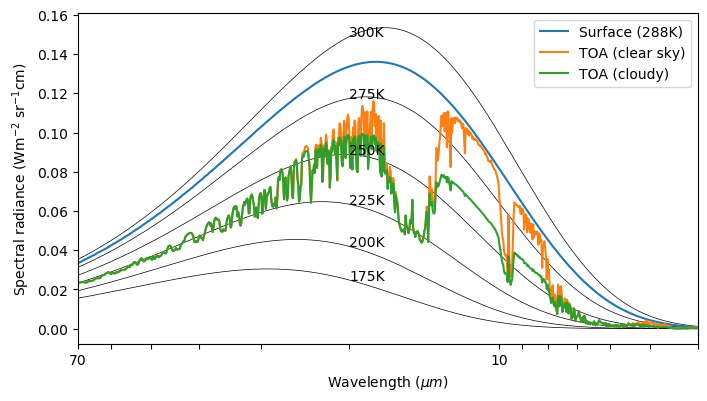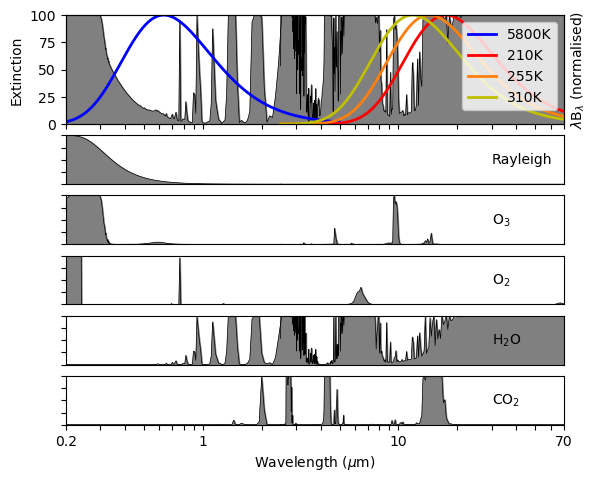Edward Gryspeerdt - Space and Atmospheric Physics Group Imperial College London, 2020
A simple python interface/wrapper for LibRadTran.
Note that you will need to download LibRadTran separately from http://www.libradtran.org/doku.php
- A simple class for managing a set of options for UVSPEC
- Can parse UVSPEC output into an xarray
- Parses verbose output (so easy to use pre-calculated optical properties)
- Includes a set of examples (for a set of atmospheric radiation lectures)
Run python setup.py install
To make use of the function get_lrt_folder(), place the path to your libradtran folder in the file ~/.pylrtrc
from pyLRT import RadTran, get_lrt_folder LIBRADTRAN_FOLDER = get_lrt_folder() slrt = RadTran(LIBRADTRAN_FOLDER) slrt.options['rte_solver'] = 'disort' slrt.options['source'] = 'solar' slrt.options['wavelength'] = '200 2600' output = slrt.run(verbose=True)
For more advanced examples, please see the examples directory.

